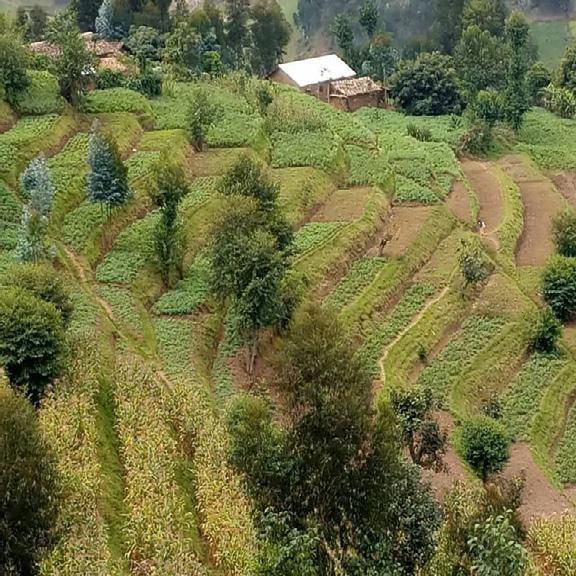
2 minute read
EXECUTIVE SUMMARY
Launched on June 22, 2017, the Feed the Future
Rwanda Hinga Weze activity was a $32.6 million, five-year initiative to sustainably increase smallholder farmers’ income, improve the nutritional status of women and children, and increase the resilience of agricultural and food systems to the changing climate.
Advertisement
Building on important joint goals of USAID and the Government of Rwanda (GoR), Hinga Weze was designed with three primary objectives:
1. Agriculture productivity sustainably increased.
2. Farmers’ market access improved.
3. Nutrition outcomes of agricultural interventions improved.
In the pursuit of these mutually-reinforcing objectives, Hinga Weze implemented a participant-centered strategy—guided by a short and memorable phrase “produce more, sell more, and eat more nutritiously,”—across ten targeted districts in Rwanda.
This final program report presents Hinga Weze’s achievements over its five years of implementation and describes its successful performance against the contract and Monitoring, Evaluation, and Learning (MEL) Plan targets. By the end of the fifth year of implementation, the activity met all contract-related targets and the vast majority of other project targets due to Hinga Weze’s focus on the nexus between production, market access, and improved nutrition. This allowed it to build constructive partnerships and to take a leading role among USAID partners and Government of Rwanda (GoR) stakeholders.
Hinga Weze focused on encouraging the adoption of agricultural best practices in order to improve incomes for 735,000 farmers as well as to strengthen their market linkages. From the outset, Hinga Weze focused on helping farmers apply improved farming practices, adapt to climate change, access markets, and adopt guidelines on nutritious food consumption. It also supported thousands of participants by delivering nutrition support through capacity-building for Community Health Workers and Farmer Promoters, as well as coordinating interventions at the district-level through design and delivery of District Plans to Eliminate Malnutrition.
Hinga Weze interventions were based on the GoR Strategic Plan for Agriculture Transformation in Rwanda and GoR district-level targets (“Imihigo”) signed by each District Mayor as the basis for its District Action Plans. Interventions were also based on formal Memorandums of Understanding agreed with the Ministry of Agriculture and Animal Resources, the National Child Development Agency, and the Rwanda Agricultural Board, among others. These approaches were the foundation of Hinga Weze’s robust collaboration with stakeholders and resulted in strong buy-in at all levels, as shown by regular validation by all counterparts, including by the Hinga Weze Steering Committee, of annual work plans and project outcomes.
The activity came to a successful close at the end of its Year 5 having focused on sustainability and on strengthening collaborative approaches in order to ensure the full achievement of the remaining contract targets. It did so using its well-regarded approach of “aggressive collaboration” with partners and stakeholders, including USAID, MINAGRI and RAB, district authorities, and many others. This resulted in Hinga Weze being able to hand over all of its activities to other stakeholders, especially those in the private sector and relevant GoR institutions, to ensure that momentum is not lost.
Table 1 presents a summary of Hinga Weze’s achievements over its five years of implementation and demonstrates the high level of targets achieved. The strong collaboration built during this time also ensured that Hinga Weze was able to successfully hand over activities to other stakeholders for sustainable and long-term continuation. As a result, the Hinga Weze legacy will remain in the lives of thousands of farmers, small and medium enterprises, promoters, local officials, and other stakeholders..
*Indicators highlighted in orange are contractual targets. Cell value >= 0.81 G Cell value from 0.66-0.809
Footnote 1: 56.72% of children have consumed at least one targeted nutrient-rich value chain crops or products
Footnote 2: 57.81 % of women have consumed at least one targeted nutrient-rich value chain crops or products






